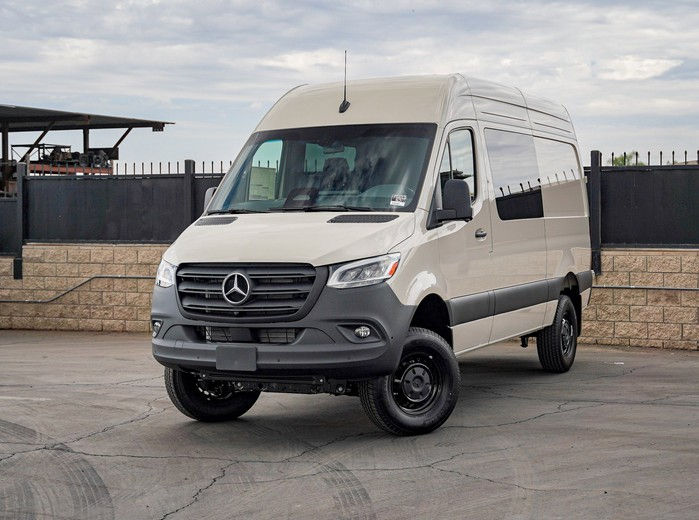Inverters and shore power
- Korey

- May 1, 2021
- 4 min read
Updated: Jul 14, 2024
We often get a request to add an inverter? Whats an inverter? Its an electrical device that converts DC (12V) energy to AC energy (120v) in your van. A 120v outlet is what you have in your house. An very simple way to think of DC vs AC is to look at it like water. DC energy is like faucet and AC is like a fire hose. AC allow a lot more electricity to flow. An inverter "compacts" DC energy so that it can flow it at a higher rate to run things like microwaves, blenders, coffee makers, hot plates...anything with heat requires a lot of energy.
Why don't you add inverters and/or shore power in your vans? We are building weekenders, light builds typically for families. Space is valuable and we need this space for gear or people. We are not building vans people are living out of. Inverters require lots of space, need to be safely isolated, and frankly we are not building homes. They also require the battery to be 1-2 feet near the battery bank to run effectively. This means batteries need to be placed inside or under the van, large lines need to be ran, and a box needs to be built to house all the electronics/batteries. We prefer to keep the huge space this takes up for additional gear space or sleeping area for the family. It takes up a huge amount of valuable space and for the most part is not needed in the type of builds we do. This space typically is where other people may sleep and gear is stored.
example of a battery/inverter set up (vanlifeoutfitters)

What we do:
We put the batteries under the hood. Out of the way, easily serviced, and this keeps space open for gear and people. It also keeps little hands from getting into electronics and power lines that can be very dangerous. Our weekender builds are set up to run fridges, lap tops, phones, fans, lights...90% of what anyone would use in a campervan. A small plug in inverter works great for a laptop computer and will plug into any cigarette lighter. This also keeps costs way down. Large power systems are very expensive, typically between 8-15k if done properly. Nothing wrong with them at all...its just not really what our type of build is typically. Do we do inverters? Yes when it fits the build but for the most part we like to keep our vans super clean inside...the idea is you can't see any of the work we did that's the point.
We installed two AGM Deepcell batteries in the hood of this VS30 Sprinter...hidden, tucked away and out of the way

Why not Lithium?
Lithium batteries are really great however a few things you have to keep in mind. They are sensitive to heat and cold...especially cold. (how does you cell phone do with extreme temps?) They require a power monitor/controller to properly charge them that takes up considerable space, and nice quality ones are very expensive easily adding a few thousand or more on top of the electrical system. Because most of our batteries are in the hood or under the van this can be an issue, especially with our customers who spend time in the snow, and frankly the power requirements of our vans don't need that much extra power capacity and the idea of our builds is to keep costs down. A few extra thousand pays for a lot more goodies in the van. This is why most lithium battery systems must be place inside the van...again valuable space for gear and people. 99% of our builds this just is not needed and going from 3k to over 10k for lithium set up inside a van with an inverter is a big jump in costs just for your aux battery bank. Technology is improving rapidly, battery costs are significantly dropping and we look forward to an economical, flexible solution with lithium solution in the future. For a majority of the builds we build where the batteries are outside of the van a basic AGM system of 224 ah is more than enough for power needs for a weekender.
Ecoflow 10KW power system (~850ah Lithium 48v)
State of the art modular power system ideal to run super efficient 48v AC

AutoCraft 450ah Lithium System in rear box
Custom Rear 200ah Lithium System in custom cubbie box
Here is a great example of a pre-wired system that is "plug and play" (kinda) Wire in your solar, alternator, shore power, and power lines and you are all set. Takes the guess work of the most complicated part of wiring in your van. These range from 4-12k from various companies. This one is from Craft Works and features a 2000w inverter/charger, DC to DC charger, DC fuse panel, AC connections, and shore power input.


Able to fit this into a very small space with some very nice ultra compact heated lithium batteries. Not a cheap solution at all. 7K easily just in the parts with non of the labor accounted for. It can be lots of work even with this plug/play system we had at least 40 hours in wiring in this van and you see zero of it. One of the many hidden costs of a build that is not so obvious.




.png)



Comments